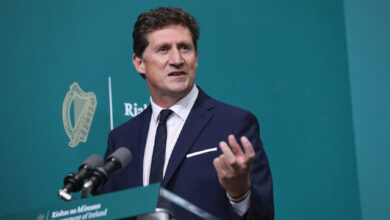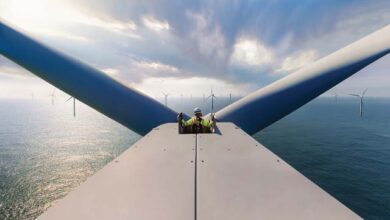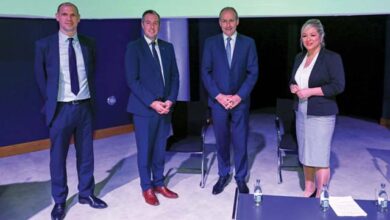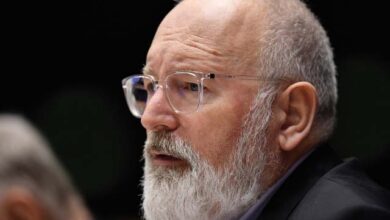EirGrid: shaping collaborative engagement
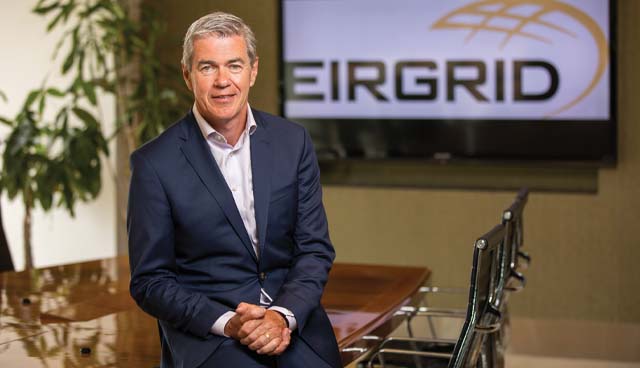
EirGrid has a unique and challenging role to play in leading the radical transformation of the electricity sector to low-carbon, renewable energy. The transmission system operator needs to add more energy from renewable sources, such as wind and sun, to the power system over the next nine years.
Doing so is necessary to meet the Government target of at least 70 per cent of electricity consumption to be met from renewable sources by 2030.
To put that in context, renewable energy accounted for 42 per cent of electricity consumption in Ireland last year. Boosting that figure to 70 per cent requires significant investments, not only in renewable energy developments, but also in the national electricity grid that transports the energy from where it is produced to where it is used.
By 2030, the grid needs to be stronger and more flexible so that it can carry lots more power from energy sources that vary depending on the weather, over longer distances. To help decide how best to do this, earlier this year EirGrid created four draft approaches to transforming Ireland’s grid.
Described by CEO, Mark Foley, as “the largest body of work that EirGrid has undertaken”, in March the company embarked on a nationwide consultation on the future of Ireland’s electricity system. The Shaping Our Electricity Future consultation took 14 weeks, and the results will be published this month. It will detail the findings from the consultation and present innovative approaches to developing the electricity grid in order to meet the Government’s 2030 renewable energy target. The target will be a talking point at COP26.
To assess how best to achieve the 2030 target EirGrid asked the public: ‘How should we achieve this?’ and presented four draft approaches for consideration:
- Generation-led: Put clean generation close to where most power is used;
- Developer-led: Let developers decide where to locate clean generation;
- Technology-led: Try new ways to move clean power across the country; and
- Demand-led: Put large electricity users close to sources of clean power.
For the national electricity grid operator, a new and innovative process for public engagement was adopted to facilitate a people-led approach on the options available.
“At EirGrid we strive for meaningful, inclusive and transparent engagement and we wanted this process to be people-led from the very start,” explained Head of Public Engagement, Sinéad Dooley.
Firstly, a clear plan for engagement and how to include all facets of society in this collaborative process was needed.
New public engagement strategy for a cleaner energy future
In the normal course of business, engagement with stakeholders is a hugely important part of EirGrid’s operations. From open exhibition days to visiting landowners and engaging with the public using a mobile information unit, EirGrid is no stranger to reaching out to foster direct contact with communities, landowners, and elected representatives on a regular basis.
With Covid-19 halting in-person information events, EirGrid accelerated its innovation in digital engagement, researching and training internally and trialling solutions, including the increased roll out of webinars, digital workshops, virtual exhibitions, and micro-sites.
“Whilst grappling with the impact of the pandemic on our engagement, pivoting to meaningful virtual engagement has allowed us to continue innovating and developing our engagement and communication processes which has culminated in one of the largest public consultations undertaken by a semi state company to date,” Dooley states.
The virtual initiative went beyond standard video conferencing and webinars, focusing on the user experience and ensuring the stakeholder voice is both heard, and, importantly, acted upon.
Inclusive approach
In the Shaping Our Electricity Future consultation and engagement process, segmenting engagement experiences was key for EirGrid in ensuring an inclusive approach, facilitating voices from across society, industry, and statutory bodies during the 14-week consultation period.
Cognisant of reaching all audiences, including youth, and rural communities, the engagement programme included youth assemblies thanks to a collaboration with the National Youth Council of Ireland, and rural workshops in conjunction with Irish Rural Link.
“We also utilised relationships with Chambers Ireland, the Public Participation Networks and Local Government to ensure the opportunity for people to shape our electricity future was not missed,” explained Dooley.
Alongside partnerships, EirGrid directly facilitated engagement events across Ireland, including stakeholder workshops, civil society, forums, and a deliberative dialogue modelled on Ireland’s citizen’s assembly.

How were these events, forums and workshops then used to inform EirGrid and its roadmap to a cleaner energy future?
The feedback and inputs from public and civil society stakeholders was analysed and used to inform the final Shaping Our Electricity Future Roadmap. Specifically, the feedback was used to:
- Influence the network and generation modelling that EirGrid has based studies on;
- The development of the Network Infrastructure Roadmap;
- The development of the Stakeholder Engagement Roadmap; and
- More broadly, influence and reinforce EirGrid’s overall approach to Public Engagement.
What did EirGrid learn from undertaking this approach to public engagement on such a large scale, using a diverse range of communication channels and collaborations?
The activity undertaken by EirGrid throughout this consultation and engagement showed significant support from stakeholders for the necessity and objectives of Shaping Our Electricity Future.
Communication is key
Adopting an innovative public engagement process such as this also called for an innovative communications campaign to amplify what EirGrid was trying to achieve: public input into the decision-making process.
A 360-communication campaign was mobilised to support and amplify the public engagement programme, using national and regional media, along with digital and social media, paired with organic and paid for content. To support this campaign, thought leadership and political engagement was also used.
“The delivery of a robust communications plan to ensure maximum amplification of the Shaping Our Electricity Future campaign was key. On analysis, the impact of the plan returned successful results, including very welcome positive media sentiment for the campaign,” explained Head of Public Relations at EirGrid, Suzanne Collins.
With public and industry responses to the Shaping Our Electricity Future public engagement campaign surpassing EirGrid’s expectations, one thing is clear: the public care about the future of the electricity system and they want an active role in the transition to a low carbon system.
To discuss this transition, and EirGrid’s public engagement approach to Shaping Our Electricity Future, EirGrid representatives, along with the Department of the Environment, Climate Action and Communications will attend an event at COP26 next month.
T: 085 603 0969
E: David.Martin@Eirgrid.com
W: www.eirgrid.com


